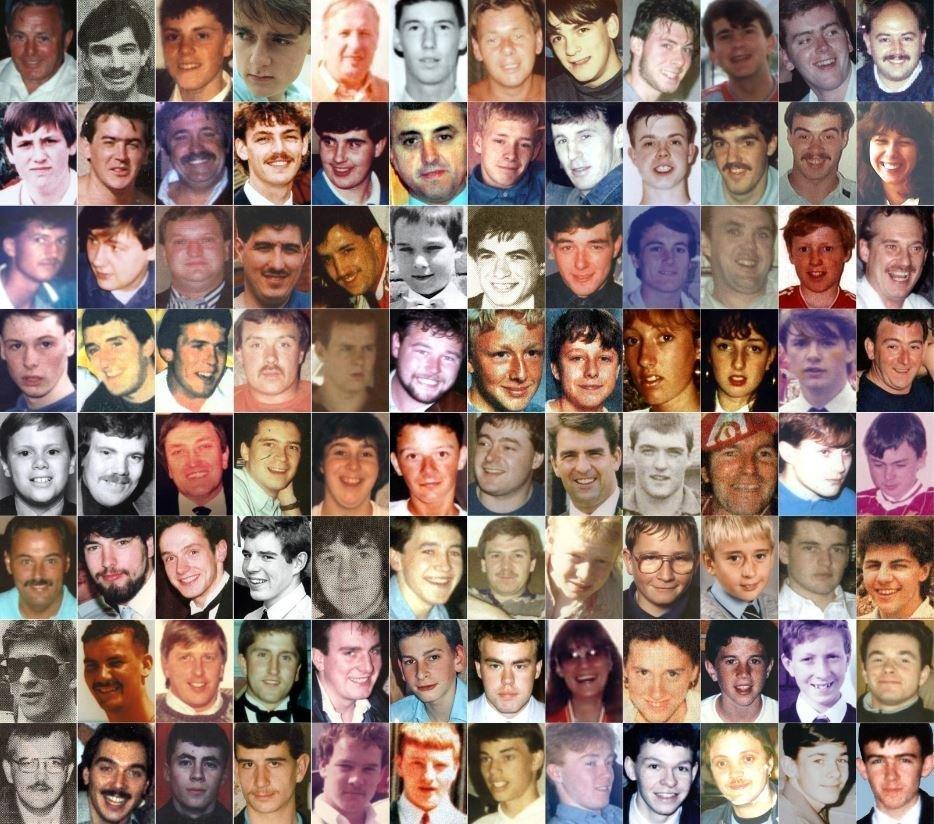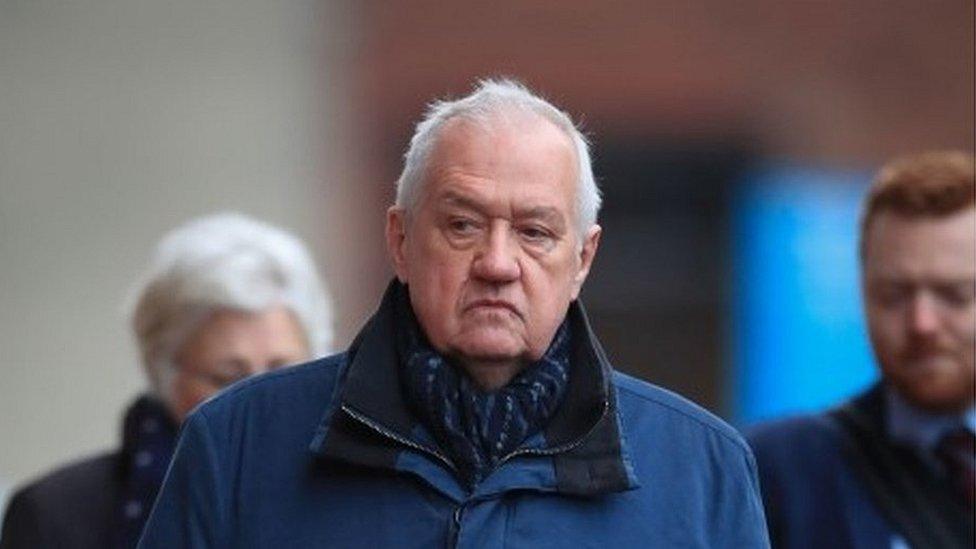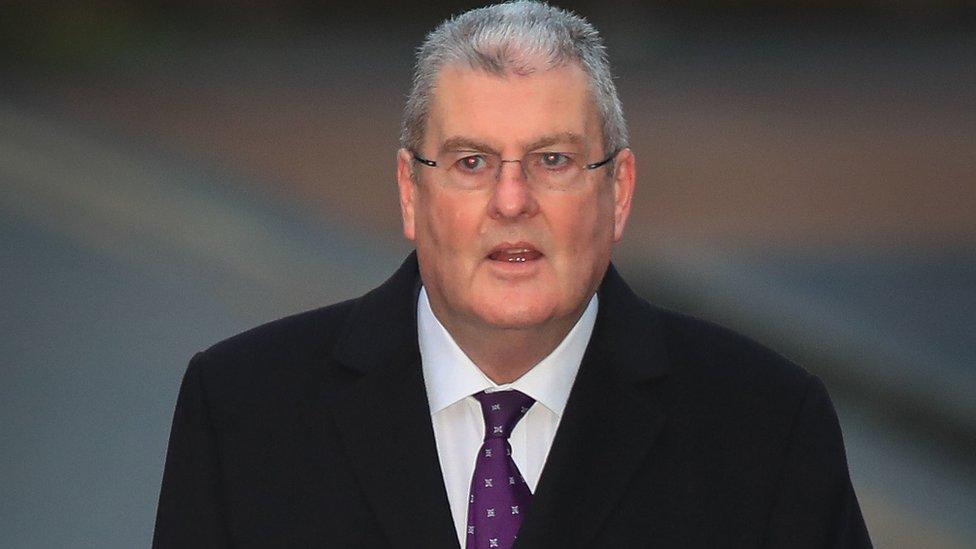Hillsborough trial: 'Overstated capacity was potential factor' in disaster
- Published

David Duckenfield (left) denies gross negligence manslaughter and Graham Mackrell denies health and safety offences
The safe capacity for a terrace at Hillsborough was about 30% lower than the number of tickets sold, a stadium safety expert has told a court.
Structural engineer John Cutlack said the safety certificate for Sheffield Wednesday showed the West Terrace, where the fatal crush happened, had a capacity of 7,200.
But Mr Cutlack calculated it would have been 5,426, Preston Crown Court heard.
David Duckenfield, 74, denies the gross negligence manslaughter of 95 fans.
The former South Yorkshire Police chief superintendent, of Ferndown in Dorset, was the match commander at the FA Cup semi-final on 15 April 1989.
Sheffield Wednesday's ex-club secretary Graham Mackrell, 69, denies a charge related to the stadium safety certificate and a health and safety charge.
'Seeds sown' for disaster
Under cross-examination by Benjamin Myers QC, defending Mr Duckenfield, Mr Cutlack agreed the stage would potentially be set for problems if more tickets were produced than a stadium could safely hold.
He told the court he was aware there had been issues of overcrowding at the ground in 1981 and 1987.
Mr Cutlack said: "I think some of the seeds of this disaster were sown 10 years before, therefore it was likely when you had a capacity crowd, some form of overcrowding could occur pretty much anywhere on that West Terrace."
The safety expert identified other problems with the ground, including an insufficient number of turnstiles for the Leppings Lane end and confusing signage.

The 96 people who lost their lives in the Hillsborough disaster
The court was told crush barriers were not all at the recommended height or spacing and gates in the pitch perimeter fence were less than the minimum recommended width.
Mr Cutlack said the tunnel which led to the central pens of the terrace should have been manned to ensure overcrowding did not occur and its slope was irregular and in places too steep.
He agreed that each of the points identified potentially "had a part to play in what happened".
Under the law at the time, there can be no prosecution for the 96th victim, Tony Bland, as he died more than a year and a day after the disaster.
The trial continues.
- Published4 February 2019

- Published31 January 2019

- Published30 January 2019

- Published29 January 2019

- Published28 January 2019

- Published25 January 2019

- Published24 January 2019

- Published23 January 2019
